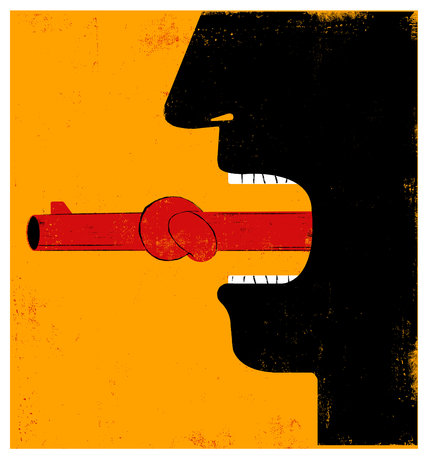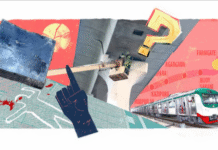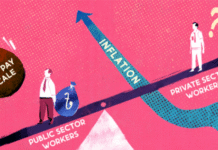Last month, a flyer entitled “The Country Without a Post Office” was circulated on the campus of Jawaharlal Nehru University (J.N.U.), here in Delhi, inviting students to a “cultural evening” on Feb. 9.
But “cultural” was a misnomer, and academic freedom would not be on the agenda. Some not-so-small print further down the page called on participants to “rage” against the Indian “occupation” of Muslim-majority Kashmir and protest the “judicial killing of Afzal Guru and Maqbool Bhat.”
Afzal Guru, who is also known as Muhammad Afzal, and Mr. Bhat were both convicted terrorists, found guilty separately after their cases slowly went up the ladder of due process, all the way to the highest court in India. Mr. Bhat was hanged in 1984 for the murder of a police inspector in Kashmir; Mr. Afzal was hanged in 2013 for his role in the 2001 attack on India’s Parliament. In both 1984 and 2013, the Congress Party was in power.
The date chosen for the Feb. 9 event at J.N.U. was the anniversary of Mr. Afzal’s execution. Upon learning of this, the university authorities initially reacted by shrugging and looking away: Students will be students. But a video made the night of the gathering soon went viral, and it seemed to show shouting students and activists vowing to break up India into small pieces. It ended with the calls, “Inshallah! Inshallah!” “Allah Willing! Allah Willing!”
More footage of the protest soon appeared online — followed by allegations that some of it had been tampered with. The local Delhi government, which is headed by Arvind Kejriwal, a vitriolic critic of Prime Minister Narendra Modi, sent seven videotapes to a laboratory for a forensic probe. On Tuesday, India’s leading news agency, PTI, reported the results: Two of the tapes had been doctored, five were authentic. (The Indian Express reports that three had been manipulated.)
I saw one of the tapes deemed to be authentic, and I heard those fever-pitch chants calling for India’s dismemberment. And so to my mind the issue isn’t what was or was not said that day; it is whether freedom of speech should be stretched to include the adulation of terrorists and calls for the destruction of India, or if it ends where sedition begins.
This happened while India’s prime minister was Jawaharlal Nehru, a self-proclaimed socialist and a liberal icon, after whom J.N.U. was named. In 1963, while Mr. Nehru was still prime minister, Parliament passed another constitutional amendment clarifying that the security of the state meant “the sovereignty and integrity of India.”
Mr. Nehru had good cause for caution. During the volatile 1940s, during which India won its independence from Britain, he saw how Islamism posed an existential challenge to the nation’s unity, and Communism to its democracy. Pakistan was born in 1947, at the same time as India, becoming the first Islamic republic of the postcolonial era. A year after that, the Communist Party of India, instead of joining Mr. Nehru’s efforts to build up the fledging Indian nation, declared its independence a “fake” and began an armed struggle.
By 1951, that red revolution had mostly died out, partly because of limited popular support and because Moscow, which backed Indian Communists, was wary of alienating Mr. Nehru as the Cold War was picking up. Yet some Communist sympathies continued to smolder. In 1962, when India suffered a devastating defeat in a war against China, a powerful section of Indian Communist leaders backed China. They were imprisoned, briefly, and in 1963, the Nehru administration clarified the scope of free-speech laws.
Within a few years, India’s Communists had split three ways. Two parties joined the nationalist mainstream; the third, which identified itself as Maoist, started a violent revolution to overthrow the Indian government. Many of that group’s younger followers found sanctuary at universities, knowing that by longstanding tradition, the police were loath to enter campuses.
But as the violence grew more intense in the 1970s and thousands of people died throughout eastern and northern India, police forces began crossing university gates to arrest Maoist radicals. Then in the 1980s the old specter of religion returned to haunt India: In Punjab, demands for the creation of a separate Sikh state turned into a full-fledged insurrection, which encouraged Muslim separatists in Kashmir to rise up as well.
Many Indians today are still wary that religious separatists and Maoist extremists continue to threaten India’s unity, and that they have supporters among students. Some try to explain away such activism by pointing to anti-Vietnam War protests at U.S. universities in the 1960s and 1970s. But to do this is to overlook the scars that terrorism’s long and lacerating history in India has left on us here. Mr. Afzal, whose rights the J.N.U. students were rising to defend, was involved in the 2001 terrorist attack on India’s Parliament. I wonder how Americans, after 9/11, would react to a “cultural evening” celebrating Osama bin Laden.
Some reactions to the J.N.U. protest were ugly. A group of lawyers assaulted the students who came to court to face charges of sedition. A videotape of a speech made by the most prominent J.N.U. student leader reportedly was doctored in ways designed to incriminate him. Such things are unacceptable.
But many Indians are livid about one thing that is not in dispute: that some of that talk on Feb. 9 was aggressively secessionist. As Mr. Nehru himself well understood, freedom of speech is not a license to undermine the sovereignty and integrity of India.
Source: NYTimes










